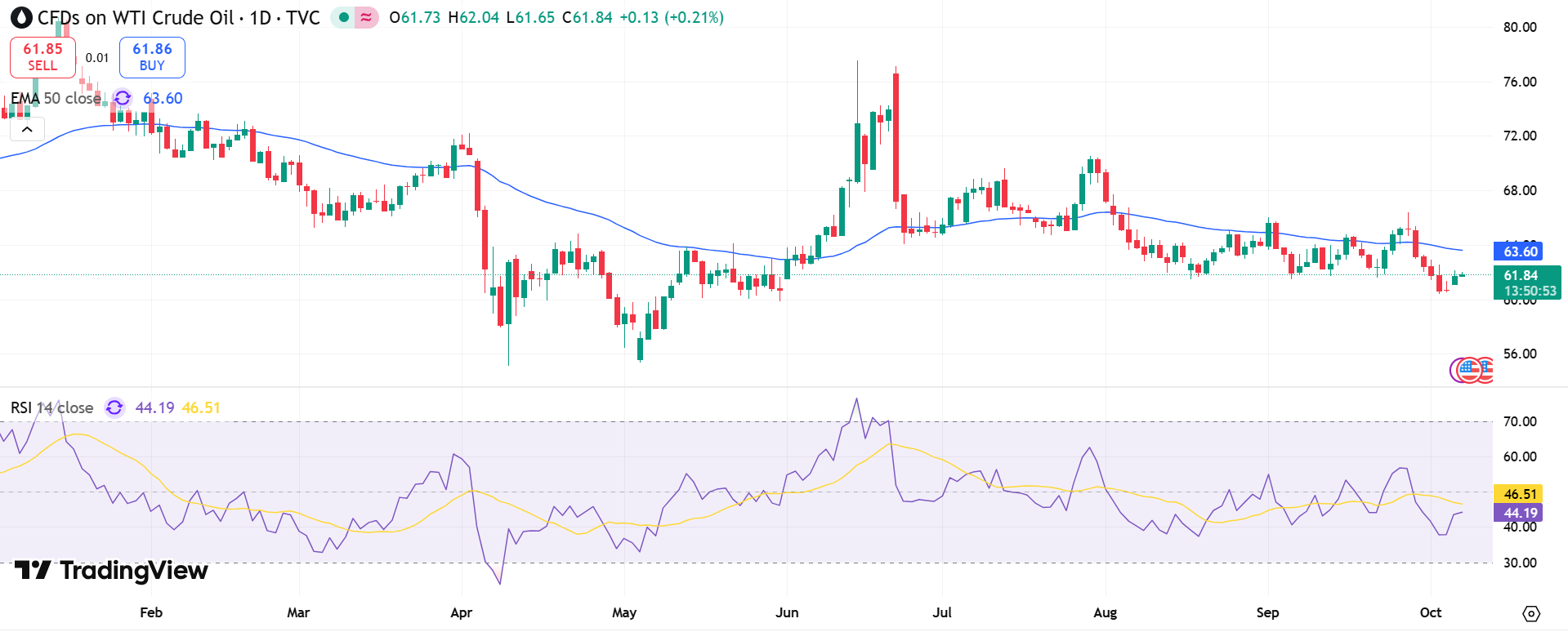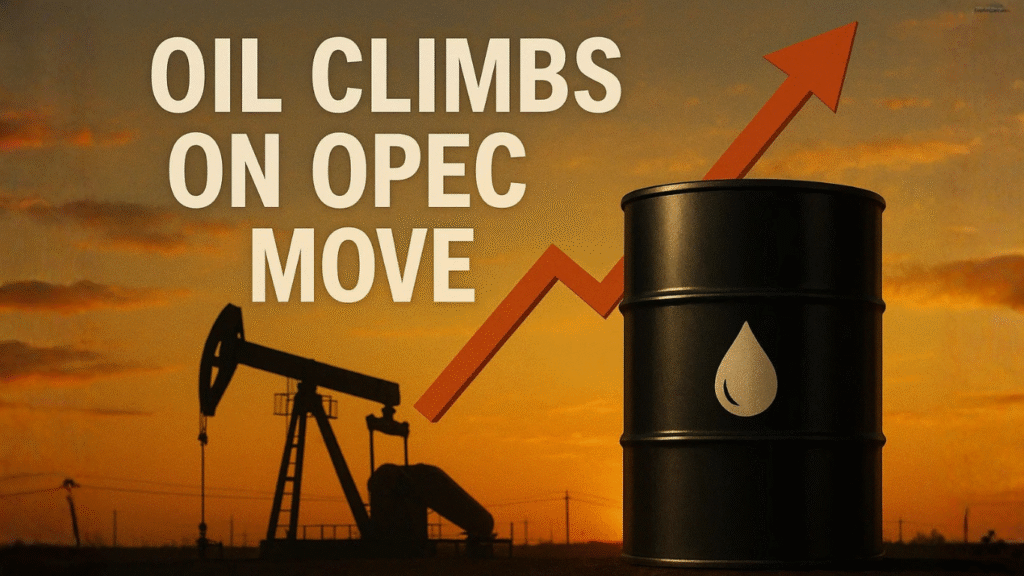Oil prices extended gains on Tuesday after OPEC+ opted for a smaller production hike than anticipated, signaling caution amid ongoing supply concerns. The producer alliance’s measured approach helped calm fears of a looming global oil surplus.
Brent crude futures rose 0.29% to $65.66 per barrel by 06:23 GMT, while U.S. West Texas Intermediate (WTI) gained 0.31% to $61.88. Both benchmarks had advanced more than 1% in the prior session following OPEC+’s decision to lift collective output by 137,000 barrels per day (bpd) beginning in November.
The increase fell short of market expectations, suggesting that member nations remain wary of oversupplying a market already balancing fragile demand growth. Analysts at ING noted that the decision reflected OPEC+’s cautious stance amid projections of a supply surplus in the fourth quarter and beyond.
“Brent had fallen by around $5 per barrel last week due to expectations of a larger supply boost, so this mild rebound seems reasonable,” said Anh Pham, senior analyst at LSEG.
Market Response and Key Insights
While traders initially braced for a steeper rise in OPEC+ output, the smaller hike has steadied market sentiment. The oil alliance has already raised production by more than 2.7 million bpd this year—about 2.5% of global demand—demonstrating its influence over price stability.
At present, analysts see the market absorbing the modest increase without triggering a structural shift into contango, a market condition signaling oversupply.
Notable factors shaping current oil dynamics:
- OPEC+ adds 137,000 bpd, easing oversupply fears
- Brent crude up 0.29% to $65.66; WTI up 0.31% to $61.88
- Year-to-date, OPEC+ has boosted output by 2.7 million bpd
- ING and LSEG analysts highlight cautious group strategy
Geopolitical Risks Keep Prices Supported

Despite the modest supply increase, geopolitical instability continues to underpin oil prices. Ongoing conflict between Russia and Ukraine has disrupted regional energy flows and heightened uncertainty about Russian crude exports.
Further pressure emerged after Russia’s Kirishi refinery halted operations at its primary distillation unit, CDU-6, following a drone strike and subsequent fire on October 4. Sources estimate recovery could take up to a month, temporarily tightening supply.
Still, analysts caution that a slowdown in global demand—particularly from U.S. tariff-related trade disruptions—could reintroduce downward pressure. Combined with steady output growth from both OPEC+ and non-OPEC+ producers, these factors may test the market’s resilience into early 2026.


